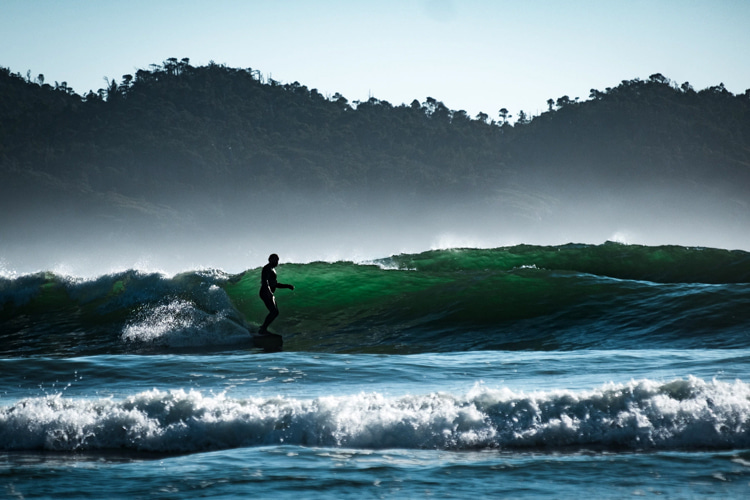Tofino is just 1,200 miles (1,930 kilometers) away from the Arctic Circle, but it is one of the coolest and most laid-back surf towns in North America.
Canada has the world's longest coastline, with 151,019 miles (243,042 kilometers) of shores.
And, despite the low temperatures, Tofino has a solid surf community and surfing lifestyle.
The Tofino district features over 20 miles (32 kilometers) of Pacific Ocean coastline with above-average surfing waves.
You'll find waves for all sorts of experience levels - two-foot gentle rollers for beginners and barrels for intermediate and advanced surfers.
There are also several surf shops and surf culture centers where you can rent surfboards and thick wetsuits and meet and hang out with local and foreign wave riders.
So, without further ado, welcome to one of the best surf spots in Canada.
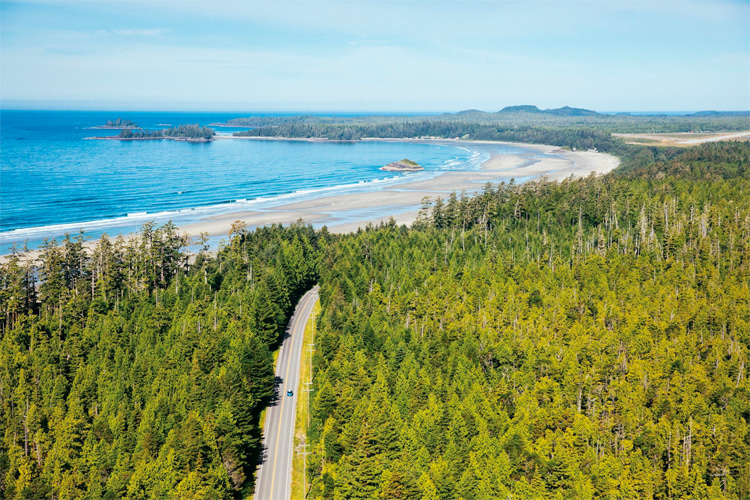
A Natural Sanctuary
Everything around Tofino breathes Nature.
Canada's ultimate surfing destination sits in the Clayoquot Sound Biosphere Reserve, a UNESCO-protected natural sanctuary.
Its ancient temperate rainforest reminds us that we're on a wild island surrounded by the power of the elements, rugged landscapes, dramatic cliffs, mountain ranges, humpback whales, cougars, wolves, black bears, and bald eagles.
Tofino is located within the Clayoquot Sound UNESCO Biosphere Reserve and is surrounded by ancient temperate rainforest, including the incomparable Pacific Rim National Park.
The region lies in British Columbia's Vancouver Island, a 2,000-mile (3,220 kilometers) ecosystem blessed by fresh and clean water.
Tofino is a cold water surfing paradise, especially on a sunny day.
And you don't need to be a hardcore wave rider to surrender to the call to surf here.
The environment and the ocean will magnetically make you want to grab your board, put on a wetsuit, hood, boots, and gloves, and paddle out.
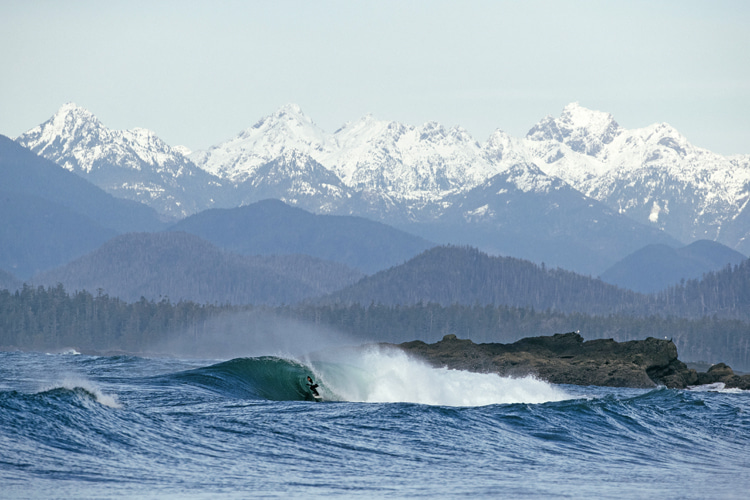
Where to Surf in Tofino
Long Beach is one of the most popular surf spots in Tofino. It is highly consistent and the go-to option for first-timers in the sport.
It provides clean and calm rollers that hold their shape nicely while simultaneously producing waist-high opportunities at other sections of the beach.
Long Beach is a six-mile-long (10-kilometer) series of beach breaks with plenty of left and right-hand waves peeling in the heart of the Pacific Rim National Park Reserve.
It's the original home of Tofino's surfing history. Two peaks stand out - Incinerator Rock and Lovekin Rock.
On a typical day, all you need is 5/4 neoprene protection, a shortboard, funboard, or longboard, and the will to experience something unique.
During summer, the water temperature ranges from 50-60 °F (10-15 °C).
In winter, the ocean temperature drops dramatically to 40 °F (4.5 °C), meaning that you must protect your body, particularly your ears, from exostosis.
The most dominant wind in summer is northwest, while during summer, the wind blows predominantly from the west and southwest.
The sands are often invaded by carpets of kelp and trees that wash ashore after powerful Pacific and Gulf of Alaska swells hit western Canada.
At the southern end of Long Beach, there's Wickaninnish, a great beach break for beginners with many nearby hotels, trails, and viewpoints.
Chesterman Beach is one of the other instant classics.
It is located north of Long Beach and has three main peaks - North, Middle, and South - which need size to break in the sheltered zone.
A little bit further south, you'll find Rosie Bay Beach, a small rocky cove pumping punchy left-hand waves at low tide.
The Rip Curl Pro Tofino is one of Canada's most important surfing events. The first local surf contest was held in 1988.
It often takes place in Cox Bay Beach, a crescent-shaped surf venue with two sections - Corner and Middle - that work pretty well with different swells.
If you're getting into surfing, the whitewash waves will help you get up on your surfboard fast.
If you're into adventure and road and boat trips, you'll find pristine and secluded waves hidden and breaking down the coast and point breaks up north.
Thirty miles (46 kilometers) south of Tofino, there's a good and uncrowded surf break at Twin Rivers' Mussel Beach.
It works great with a south swell and provides spectacular tube-riding gems breaking over a rocky ocean floor.
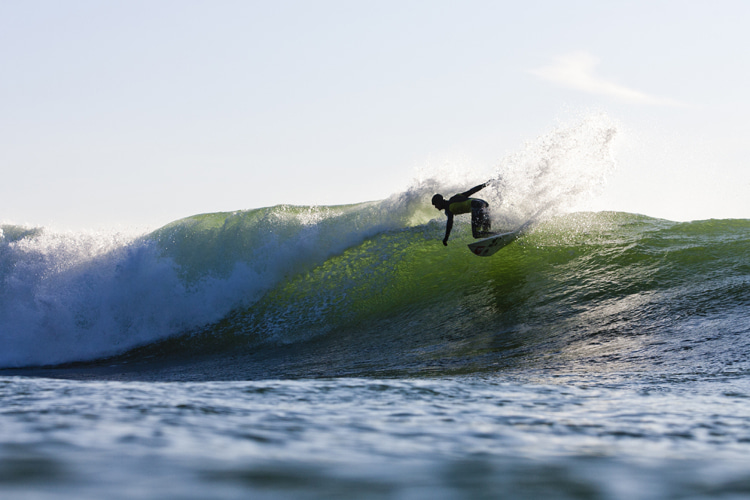
A Long History of Surfing
Believe it or not, Canada is home to some of the planet's wave-riding pioneers.
First Nations, the Canadian indigenous people, used to shape local red cedar trees into large canoes and ride waves just like ancient Peruvians did with "caballitos de totora."
They have been living on Vancouver Island for the last 10,000 years.
Surfers, as we know them today, discovered Tofino's potential in the 1960s. They were American hippies seeking to avoid the draft for the Vietnam War in search of peace, wildlife, and van life.
Tofino's first surf school was established in 1972.
Local surfers Kent Fiddy and Steve Richey founded the Water Safety and Surf Apparatus School.
"In the 1990s, the lumberjacks clashed with the increasingly environmentally aware surfers and First Nations people, leading to the largest act of civil disobedience in Canada's history," notes Sam Haddad in the book "Epic Surf Breaks of the World."
"During the Clayoquot protests, 900 people were arrested for trying to stop trees being felled."
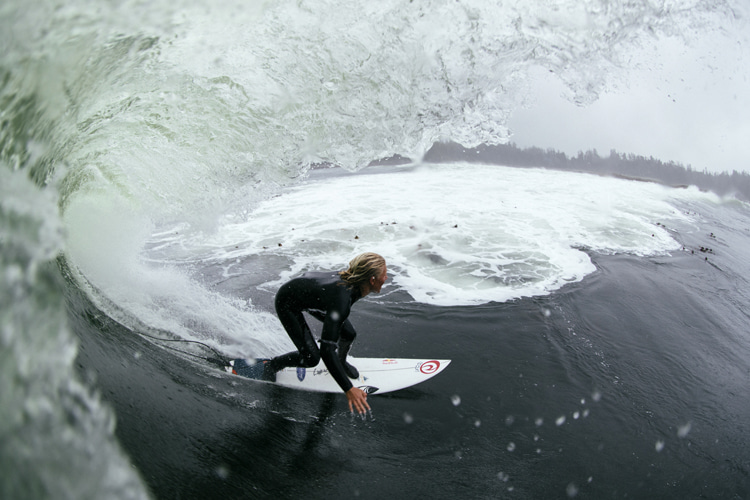
Tough City
Tofino is also known as "Tough City" because of its remoteness and raw, rainy, cold, and foggy winters.
Nevertheless, you'll always feel comfortable and cozy in Canada's surfing capital - people are friendly, and the local water sports community is open to tourists from all corners of the globe.
Actually, the quiet town attracts over half a million visitors every year.
There are great hotels and stylish accommodations, high-end eco-resorts, plenty of things to do and visit, and a thriving and exciting food scene.
Occasional bonfires keep the surfing community tight and united.
As of 2016, Tofino had 1,932 inhabitants - around 50 percent surf. And most of them are also into skiing and snowboarding.
Getting to Tofino is easy.
Once you arrive at the Vancouver International Airport (YVR), take a domestic flight to the Tofino-Long Beach Airport (YAZ).
Alternatively, drive and get the ferry from Horseshoe Bay to Nanaimo.
If you're an intermediate or advanced surfer, you may want to ride Tofino's waves in winter (early December to late February); if you're keen to learn to surf, summer (early June to late August 31) is the best time of the year.
